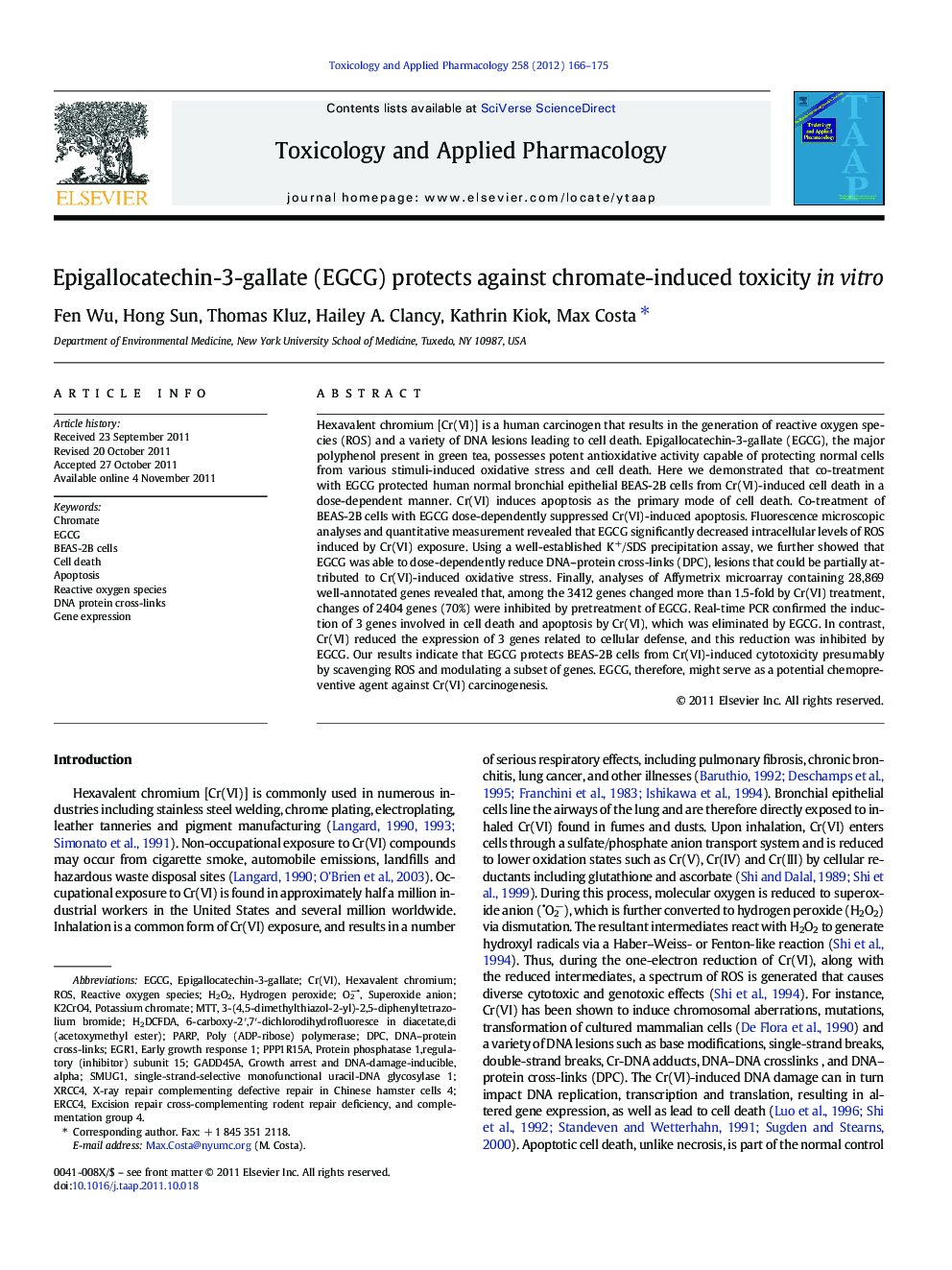| کد مقاله | کد نشریه | سال انتشار | مقاله انگلیسی | نسخه تمام متن |
|---|---|---|---|---|
| 2569672 | 1128544 | 2012 | 10 صفحه PDF | دانلود رایگان |

Hexavalent chromium [Cr(VI)] is a human carcinogen that results in the generation of reactive oxygen species (ROS) and a variety of DNA lesions leading to cell death. Epigallocatechin-3-gallate (EGCG), the major polyphenol present in green tea, possesses potent antioxidative activity capable of protecting normal cells from various stimuli-induced oxidative stress and cell death. Here we demonstrated that co-treatment with EGCG protected human normal bronchial epithelial BEAS-2B cells from Cr(VI)-induced cell death in a dose-dependent manner. Cr(VI) induces apoptosis as the primary mode of cell death. Co-treatment of BEAS-2B cells with EGCG dose-dependently suppressed Cr(VI)-induced apoptosis. Fluorescence microscopic analyses and quantitative measurement revealed that EGCG significantly decreased intracellular levels of ROS induced by Cr(VI) exposure. Using a well-established K+/SDS precipitation assay, we further showed that EGCG was able to dose-dependently reduce DNA–protein cross-links (DPC), lesions that could be partially attributed to Cr(VI)-induced oxidative stress. Finally, analyses of Affymetrix microarray containing 28,869 well-annotated genes revealed that, among the 3412 genes changed more than 1.5-fold by Cr(VI) treatment, changes of 2404 genes (70%) were inhibited by pretreatment of EGCG. Real-time PCR confirmed the induction of 3 genes involved in cell death and apoptosis by Cr(VI), which was eliminated by EGCG. In contrast, Cr(VI) reduced the expression of 3 genes related to cellular defense, and this reduction was inhibited by EGCG. Our results indicate that EGCG protects BEAS-2B cells from Cr(VI)-induced cytotoxicity presumably by scavenging ROS and modulating a subset of genes. EGCG, therefore, might serve as a potential chemopreventive agent against Cr(VI) carcinogenesis.
► EGCG protected human normal bronchial epithelial BEAS-2B cells from Cr(VI)-induced cell death and apoptosis.
► EGCG significantly decreased intracellular levels of ROS induced by Cr(VI) exposure.
► EGCG reduced DNA-protein cross-links, lesions that could be partially attributed to Cr(VI)-induced oxidative stress.
► EGCG modulated 70% of the gene expression changes induced by Cr(VI) exposure.
Journal: Toxicology and Applied Pharmacology - Volume 258, Issue 2, 15 January 2012, Pages 166–175